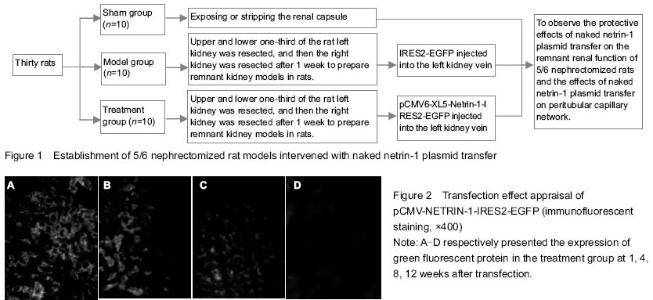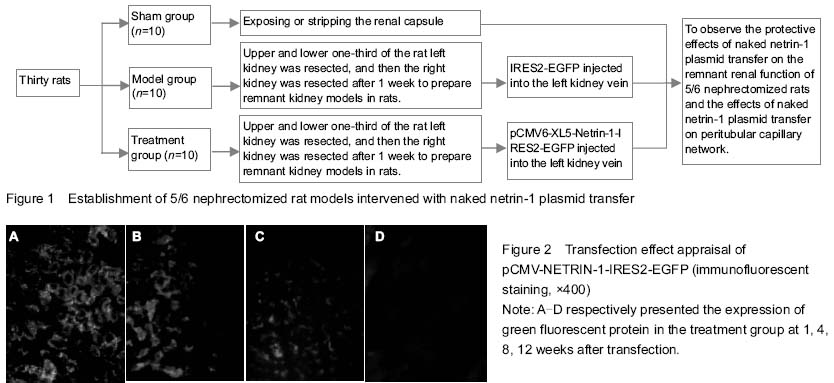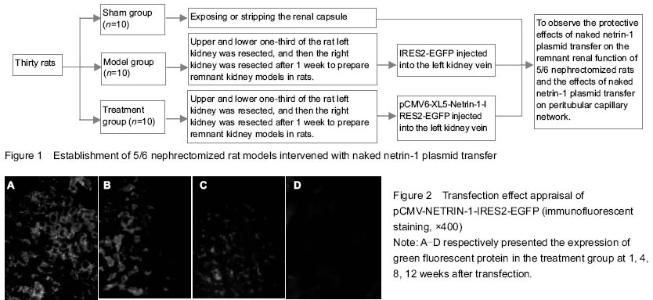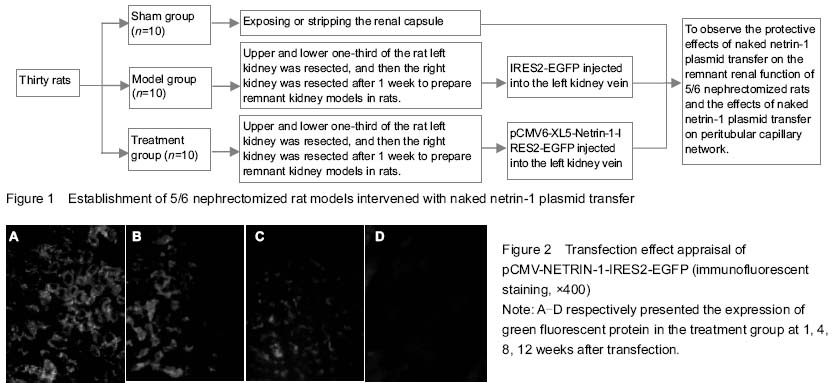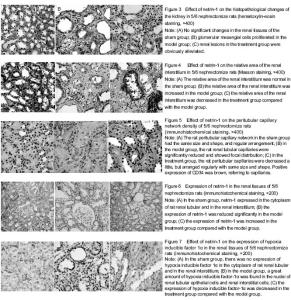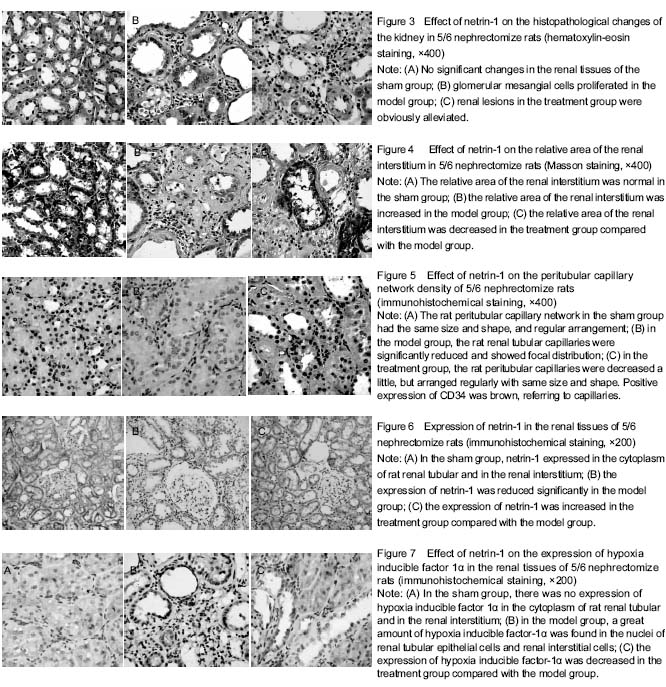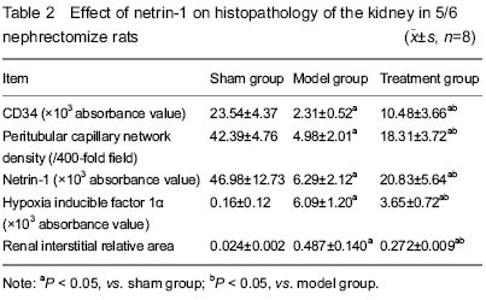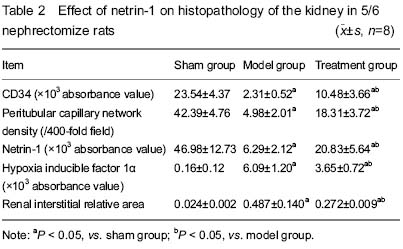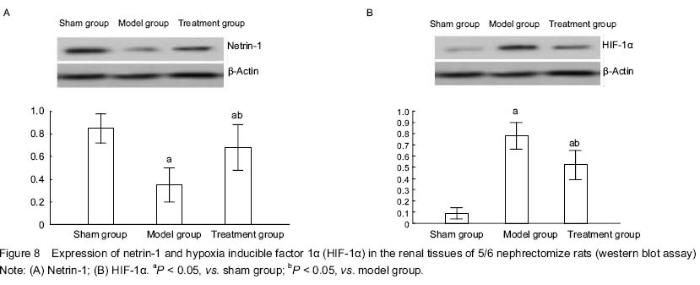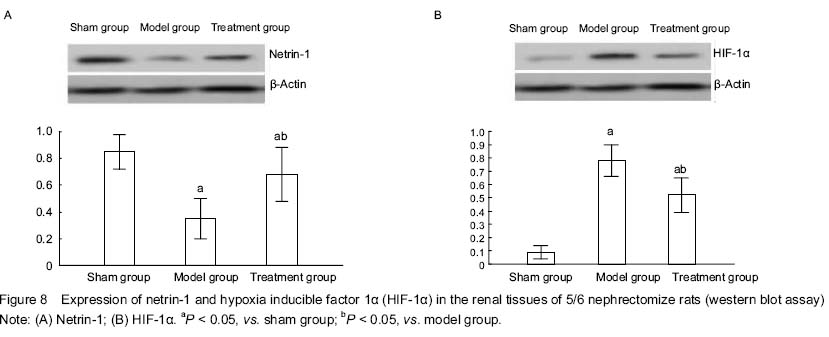| [1] |
Zeng Zhen, Hu Jingwei, Li Xuan, Tang Linmei, Huang Zhiqiang, Li Mingxing.
Quantitative analysis of renal blood flow perfusion using contrast-enhanced ultrasound in rats with hemorrhagic shock during resuscitation
[J]. Chinese Journal of Tissue Engineering Research, 2021, 25(8): 1201-1206.
|
| [2] |
Jiang Xin, Qiao Liangwei, Sun Dong, Li Ming, Fang Jun, Qu Qingshan.
Expression of long chain non-coding RNA PGM5-AS1 in serum of renal transplant patients and its regulation of human glomerular endothelial cells
[J]. Chinese Journal of Tissue Engineering Research, 2021, 25(5): 741-745.
|
| [3] |
Liu Kun, Xie Lin, Cao Jun, Ding Ning, Xu Lingbo, Ma Shengchao, Li Guizhong , Jiang Yideng, Lu Guanjun.
Increased FoxO1 DNA methylation level in homocysteine-induced podocyte apoptosis
[J]. Chinese Journal of Tissue Engineering Research, 2021, 25(2): 269-273.
|
| [4] |
Dai Yaling, Chen Lewen, He Xiaojun, Lin Huawei, Jia Weiwei, Chen Lidian, Tao Jing, Liu Weilin.
Construction of miR-146b overexpression lentiviral vector and the effect on the proliferation of hippocampal neural stem cells
[J]. Chinese Journal of Tissue Engineering Research, 2021, 25(19): 3024-3030.
|
| [5] |
Wang Xiaobo, Wang Changan, Han Jianle, Yang Qingyan, Yang Shuaiping, Yang Junwei.
Influence of conversion from cyclosporine to tacrolimus on glucose metabolism and cardiovascular risk profiles in stable kidney transplant patients
[J]. Chinese Journal of Tissue Engineering Research, 2021, 25(14): 2236-2240.
|
| [6] |
Ye Quanying, Chen Qisheng, Li Yanwen, Wang Ting, Chen Xiaoyan, Yue Yun.
Effect of cassia seed aqueous extract on blood pressure level in N-nitro-L-arginine-methyl ester induced hypertensive rats
[J]. Chinese Journal of Tissue Engineering Research, 2021, 25(11): 1705-1711.
|
| [7] |
Liu Junchang, Gao Xiaolin, Jiang Taimao.
Correlation of CY3A5 genetic polymorphism with concentration/dosage of tacrolimus and individualized administration of tacrolimus after kidney transplantation
[J]. Chinese Journal of Tissue Engineering Research, 2021, 25(11): 1740-1744.
|
| [8] |
Huo Shaochuan, Wang Haibin, Tang Hongyu, Wang Yueqi, Chen Qunqun, Feng Ziyu, Li Yikai.
Treatment of knee osteoarthritis by tonifying kidney and spleen and activating blood circulation herbs via chondrocyte IL-1beta/ERR-alpha/SOX9/Col2alpha1 signaling pathway in a rat model
[J]. Chinese Journal of Tissue Engineering Research, 2020, 24(35): 5577-5581.
|
| [9] |
Guo Juan, Zheng Shan, Xie Hui, Hu Yahui.
An analysis of pathogenic bacteria infection in 422 kidney transplant recipients
[J]. Chinese Journal of Tissue Engineering Research, 2020, 24(32): 5198-5202.
|
| [10] |
Liu Hao, Liu Jun, Rui Yongjun, Tang Fenglin, Lu Miao, Ding Tao.
Co-transfection by Nell-1 and Noggin-shRNA promotes osteoblast differentiation of adipose derived mesenchymal stem cells
[J]. Chinese Journal of Tissue Engineering Research, 2020, 24(31): 4966-4970.
|
| [11] |
Wang Wenhong, Li Yanjun, Cui Caiyun.
Factors influencing differentiation of stem cells from the apical papilla into odontoblasts
[J]. Chinese Journal of Tissue Engineering Research, 2020, 24(31): 5071-5078.
|
| [12] |
Wu Libing, Xu Yangyang, He Yujie, Wang Haiyan, Gao Shang, Enhejirigala, Li Xiaohe, Li Zhijun.
Anatomical etiology and clinical significance of three-dimensional digital measurement of kidney stones
[J]. Chinese Journal of Tissue Engineering Research, 2020, 24(29): 4662-4666.
|
| [13] |
Xie Lei, Zhang Yan, Jiang Ziwei, Shen Zhen, Feng Junming, Hao Chengyi, Cai Yangting.
Guided bone regeneration combined with kidney-tonifying therapy for repairing femoral bone defect in rats
[J]. Chinese Journal of Tissue Engineering Research, 2020, 24(26): 4106-4111.
|
| [14] |
Liu Luhao, Fang Jiali, Zhang Lei, Li Guanghui, Xu Lu, Lai Xingqiang, Xiong Yunyi, Chen Rongxin, Ma Junjie, Chen Zheng.
Clinical assessment criteria of donor pancreas transplants for simultaneous pancreas-kidney transplantation
[J]. Chinese Journal of Tissue Engineering Research, 2020, 24(26): 4157-4161.
|
| [15] |
Wang Ning, Chen Junyi, Zhu Lunjing, Duan Jiangtao, Wang Ye, Li Zhijun, Bei Chaoyong.
Lentivirus-mediated P75 neurotrophin receptor silencing combined with nerve growth factor overexpression promotes proliferation of rat bone marrow mesenchymal stem cells
[J]. Chinese Journal of Tissue Engineering Research, 2020, 24(25): 3988-3993.
|
